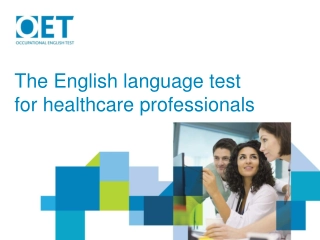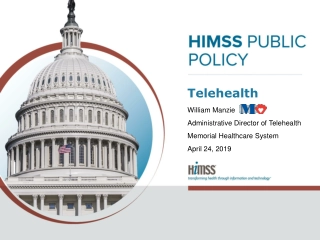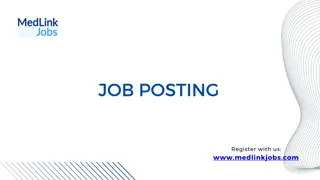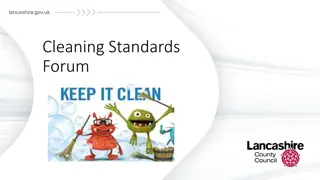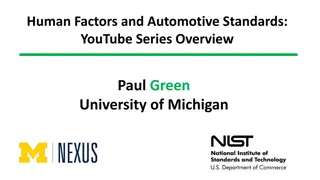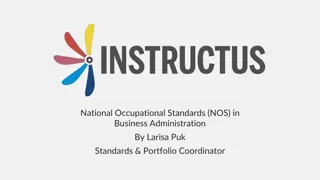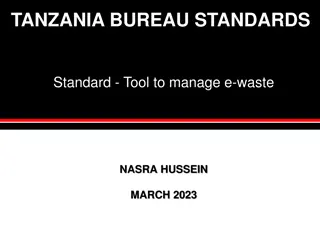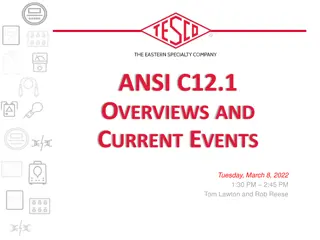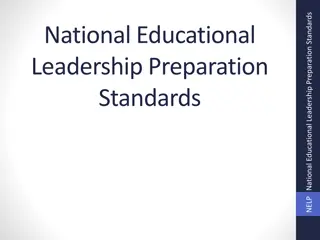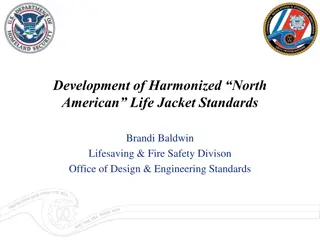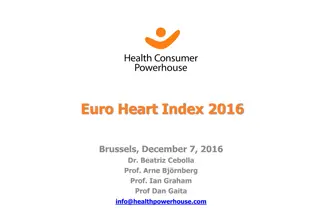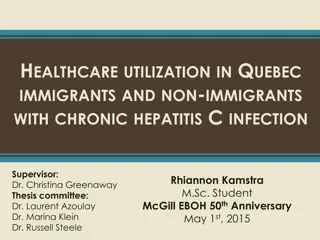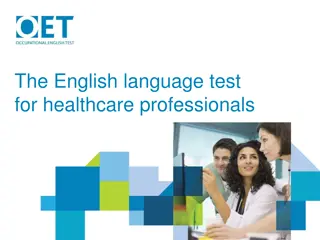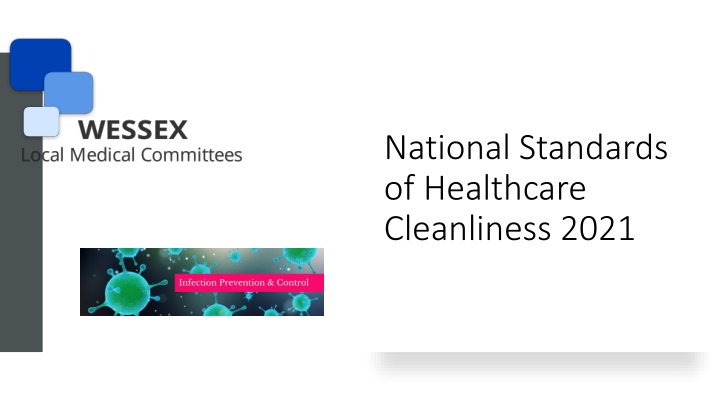
2021 National Standards of Healthcare Cleanliness Overview
Discover the updated National Standards of Healthcare Cleanliness for 2021, replacing the NHS 2007 specifications. Learn about the expectations from the CQC for GP practices, including effective IPC policies, staff training, and cleaning contractors' responsibilities. Find out why these standards are crucial for promoting transparency, public confidence, and continuous improvement in cleanliness practices.
Download Presentation

Please find below an Image/Link to download the presentation.
The content on the website is provided AS IS for your information and personal use only. It may not be sold, licensed, or shared on other websites without obtaining consent from the author. If you encounter any issues during the download, it is possible that the publisher has removed the file from their server.
You are allowed to download the files provided on this website for personal or commercial use, subject to the condition that they are used lawfully. All files are the property of their respective owners.
The content on the website is provided AS IS for your information and personal use only. It may not be sold, licensed, or shared on other websites without obtaining consent from the author.
E N D
Presentation Transcript
National Standards of Healthcare Cleanliness 2021
What? The National standards of healthcare cleanliness 2021 replace the National specifications for cleanliness in the NHS 2007 The 2021 standards reflect modern methods of cleaning, infection prevention and control (IPC) and other changes since the last review, and important considerations for cleaning services during a pandemic; and emphasise transparency to assure patients, the public and staff that safe standards of cleanliness have been met (england.nhs.uk) The CQC suggest This guidance mirrors expectations for GP providers, which are already covered by our regulations and the code of practice (CQC mythbusters 99: Infection Prevention and Control in General Practice) So what are the current expectations from CQC?
What? GP Practices should have an effective IPC policy- accessible to all and regularly updated Policy for high risk procedures, such as minor surgery IPC lead with overall responsibility for IPC IPC audit programme, with evidence of action planning and how these issues were addressed. Staff training requirements, including PPE safe use and disposal Cleaning contractors- schedule of general cleaning, should include frequency of specific areas, fixtures and fittings, including high touch points Policy for cleaning specific clinical equipment Access to occupational health services- staff immunisations, sharps policy (Taken from CQC GP mythbusters99: Infection prevention and control in General Practice, last updated May 2022)
Why? They build on the general IP&C considerations and processes that are already expected of General Practice, as just discussed. They encourage a collaborative approach - Different staff groups, both clinical and non-clinical, will be responsible for cleaning different elements within an area; they need to work together to meet the cleanliness standard for the whole area (england.nhs.uk) They set a benchmark and promote good practice They enable a clear auditing system to be in place and encourage continuous improvement They provide transparency to patients and visitors to the environment by detailing clear plans, expectations and compliance, which in turn with promote public confidence and satisfaction.
How? Cleanliness charter- to promote the ethos of the 2021 standards, particularly by highlighting the importance of a collaborative approach. Signing up to this charter publicises an organisation s commitment to achieving a consistently safe and high standard of cleanliness Cleaning responsibilities framework-Healthcare establishments must produce a local schedule of cleaning responsibilities detailing all items to be cleaned and who is responsible for cleaning each one. This must allow enough time to complete specific training tasks, and training to do this, regardless of the team member assigned to the task. Safe cleaning frequencies- there is not a national set amount of cleaning frequencies, this is set by the organisation dependant on their need and resources. The standards provide a baseline for organisations. Functional Risk (FR) ratings for different areas-All healthcare environments should pose minimal risk to patients, staff, and visitors, but because different functional areas do not carry the same degree of risk, they will require different cleaning frequencies and levels of monitoring and auditing. Identifying the FR category for functional areas is the crucial first step in applying the standards: the cleaning, monitoring and audit frequency and audit target scores are all directly linked to this. Auditing and monitoring to provide assurance that the standards are being met, there are three types of audit: Technical audit (checks cleanliness against the standards), Efficacy audits (checks that the correct processes and procedures are in place), and external audit (provides an external view and checks the technical and efficacy audits) Taken from-B0271-national-standards-of-healthcare-cleanliness-2021.pdf (england.nhs.uk)
When? The Standards apply across all healthcare settings, including Primary Care, this has been confirmed by NHS England leads on the standards, Emma Brooks and Philip Shelly, with the view to commence implementation from November 2022
Support for Primary Care There is a national webinar on the standards for primary care anticipated the end of October 2022 with new appendix been launched to support primary care and ambulance trusts Local IP&C leads for ICB/ICS are a fantastic support for practices and may be able to provide local tools and resources and help with risk assessment and processes. The National Infection and Prevention Control manual for England
References/ resources NHS England National infection prevention and control B0271-national-standards-of-healthcare-cleanliness-2021.pdf (england.nhs.uk) NHS England National Standards of Healthcare Cleanliness 2021: Supporting documents

